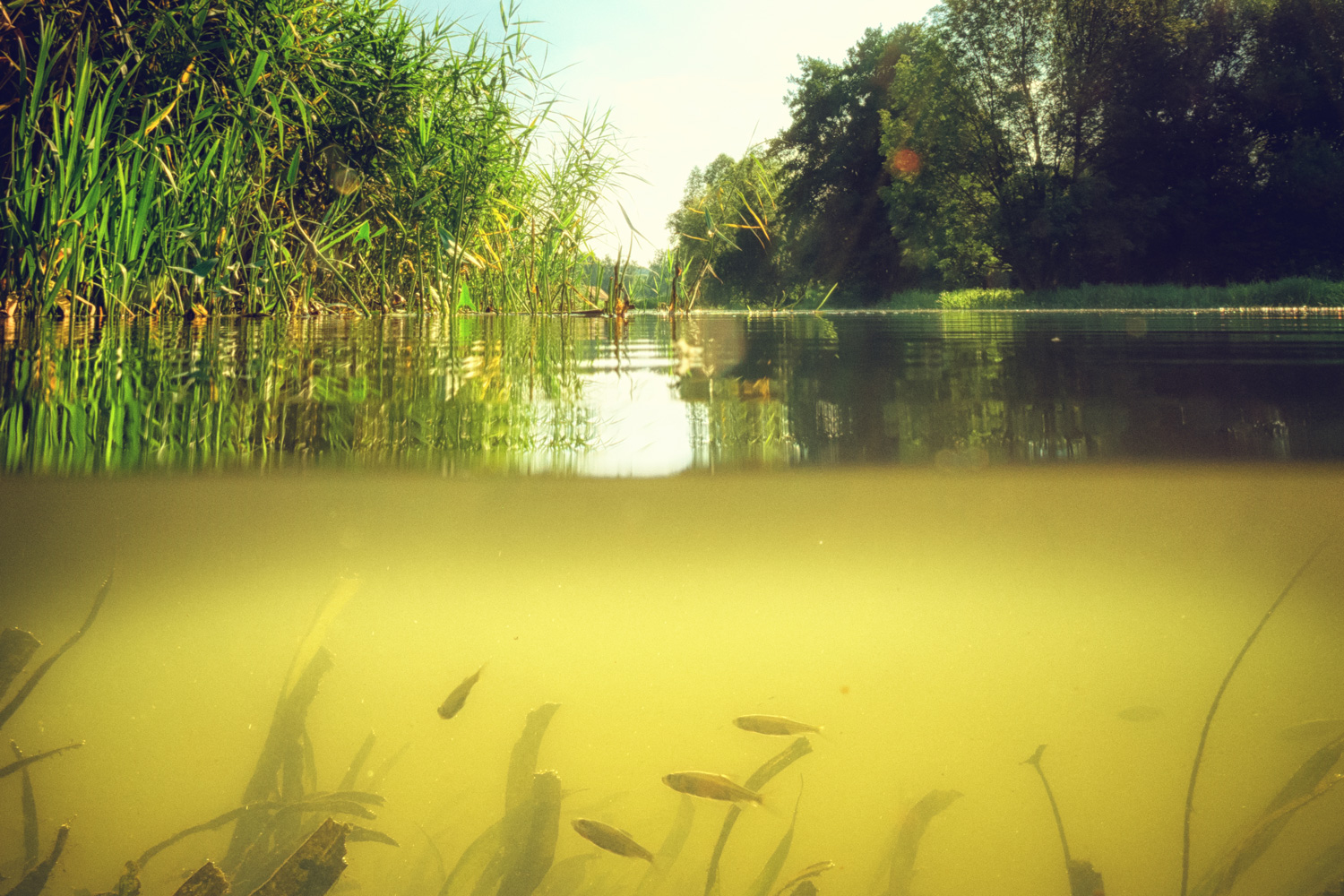Animal and Dairy Science
-

This publication contains English-Spanish translations of common dairy reproduction terminology to help producers better use Spanish to evaluate reproductive management and communicate with employees.
William Graves
|
-

C 1048
Oxygen Depletion in Ponds
Fish ponds may experience a loss of oxygen at any time of the year, depending on the weather and amount of nutrient enrichment the pond has received; however, most oxygen depletions occur in warm weather and usually follow a period of cloudy, overcast conditions. Low oxygen concentration in pond water means stress and possibly death for the pond fish. When fish die from low oxygen, there can be serious financial consequences for commercial fish operations; for example, largemouth bass, bream and grass carp can be worth more than $3,000.00 per acre. Therefore, pond owners should consider a plan to provide aeration for their ponds before oxygen depletions occur.
Gary J. Burtle
|
-

Dry weather tests pond design limits for water retention, watershed area and depth. Without adequate rainfall, ponds and the property around them lose value and the pond owner can lose the fish or have to spend substantial amounts of money for weed control or pond renovation. Over the past decade, drought conditions have been the normal weather pattern across the southeastern United States. Pond design and water management options should be considered each year to plan ahead for drought effects.
Gary J. Burtle
|
-

Financial data for the year 2005 were collected from participating dairy farms and screened for completeness and validity. Each dairy farm then received a benchmark report detailing its financial results compared to the average results for the other participants and the six dairy farms with the highest net farm income per cwt. This benchmark report is discussed with the dairy farms to identify challenges and opportunities for improvement. This publication is a summary of the financial performance of the dairy farms that participated in 2005. It is intended for general use by dairy farmers, the allied industry, government, and educational professionals.
Lane O. Ely
|
-

Prevalence of mastitis in unbred, breeding-age and pregnant dairy heifers is higher than formerly realized. Infected
mammary quarters, especially those with Staph. aureus IMI, exhibit reduced mammary gland secretory
potential, marked leukocyte infiltration and the accompanying inflammation. Both nonlactating and lactating
commercial antibiotic infusion products have been used successfully to cure existing infections and reduce SCC,
and nonlactating therapy prevents new IMI with environmental streptococci. However, the goal is to prevent
new infections from occurring in these young dairy animals through management strategies aimed at vaccination,
use of teat seals, fly control and dietary supplementation. As global milk quality standards
become more stringent, management practices based on curing existing infections and preventing new IMI
in heifers will ensure that these young dairy animals enter the milking herd free of mastitis and with low SCC.
Such practices should be considered for incorporation into dairy herd health programs in herds suffering from a
high prevalence of heifer mastitis, especially mastitis caused by Staph. aureus. Not only do these practices reduce
new infections in first-calf heifers at parturition, they also reduce the introduction of Staph. aureus to the milking
herd.Steve Nickerson and Felicia Kautz
|
-

When competing in youth horse judging contests or events at horse shows, it is important to have a good understanding of basic performance events that may be encountered. This publication is designed to give a basic overview of common hunt seat and western pleasure performance classes. It is by no means comprehensive of all events that may be seen and does not go in-depth on any one event.
Kylee Jo Duberstein
|
-

The Dairy Business Analysis Project was initiated in 1996 to measure and document the financial performance of Florida dairy businesses using standardized accounting measures, so uniform comparisons could be made among participants. Formal collaboration between the Universities of Florida and Georgia began in 1998. This publication presents the results from fiscal year 1999 information.
Lane O. Ely
|
-

B 1203
Dairy Genetic Benchmarks
This publication provides genetic benchmarks for Holstein herds processed by Dairy Records Management Systems. Examples for using and applying benchmark values are provided; however, this publication should be viewed primarily as a comprehensive resource of genetic benchmark values. These values will be useful to dairy producers, dairy managers, consultants, veterinarians and agribusiness representatives as a first step in the evaluation of the genetic program of a herd.
Warren D. Gilson, Lane O. Ely, Lawton Stewart, Angelica M. Chapa, and James W. Smith
|
-

Aflatoxin is formed in stressed plants by the mold Aspergillius flavus. The mycotoxin is produced by an actively growing mold. The mold can be present without mycotoxin formation or the mycotoxin may be present without the mold. The formation of the mycotoxin can occur during storage if the feed is not kept dry. Aflatoxin can be found in many grains and forages but is most commonly found in corn, cottonseed, and peanuts. Recent data indicates the above levels may not be safe for periods of prolonged feeding.
Lane O. Ely
|